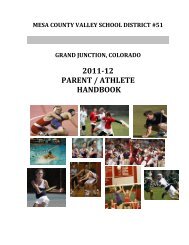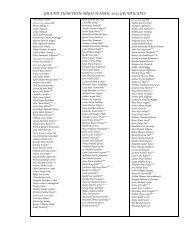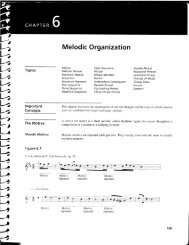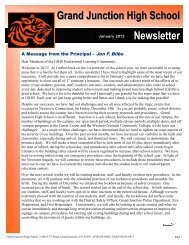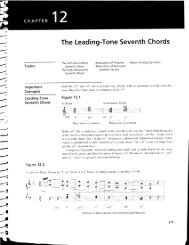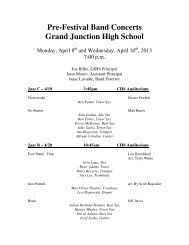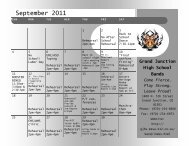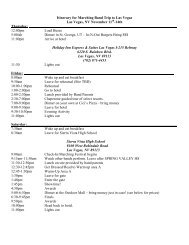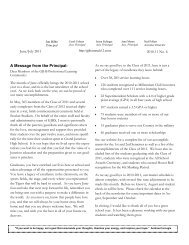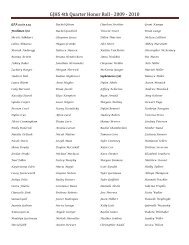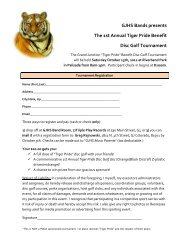You also want an ePaper? Increase the reach of your titles
YUMPU automatically turns print PDFs into web optimized ePapers that Google loves.
Keyboard Technique<br />
GJHS Drumline 2009<br />
Here are some simple guidelines for the keyboard technique that we will be using.<br />
Knocking on the Door:<br />
First, close your hand as if you were holding a mallet. Your thumb and first finger<br />
(fulcrum) should be together with the tip of the thumb located on the second section of<br />
the index finger. Your three remaining fingers should be wrapped like a fist, touching the<br />
fat part of your palm. Without moving your forearm, knock on a flat surface such as a<br />
table or door just as you would when knocking on a door. Your hand should be moving at<br />
the wrist with a straight up and down motion. When the mallet is in motion, the back of<br />
the mallet should carry the back fingers in and out of your palm. Keep them in contact<br />
with the shaft of the mallet at all times, but don’t let them lock in the palm of your hand.<br />
The Basketball Concept and Piston Stroke:<br />
Playing keyboards should be just like bouncing a basketball. When you bounce a ball, you<br />
start in the up position, flick your wrist toward the floor and catch the ball again in the up<br />
position. You should have a straight up and down motion with your wrist and your hand<br />
shouldn’t lock in the down position.<br />
To perform the stroke, start in the up position, your dynamic will be determined by your<br />
starting heights. Avoid using an even down-up motion where you spend an equal time at<br />
the top and bottom of the stroke. Think of the correct motion as a downup stroke,<br />
spending a majority of the time at the top of the stroke. Whatever you do, don’t start<br />
down and use an up-down-up stroke or an up-down stroke. Remember, the ball doesn’t<br />
start on the floor and come into your hand, like Harry Potter’s broom, when you start to<br />
bounce it. And, hopefully, it doesn’t stick to the floor when you try to bounce it.<br />
When a basketball hits the floor, it doesn’t immediately spring back up when it touches<br />
the floor. It compresses, then it comes back up. You can think of this by imagining that<br />
the ball stays round and part of it goes beneath the floor. The target that the force of the<br />
ball carries has to be beneath the floor for the ball to bounce back. The same thing applies<br />
to mallet keyboard playing. We really don’t get much rebound from a bar, but you have to<br />
imagine that you are trying to play through to the bottom of the bar in order to get a good<br />
sound. If you play off the top of the bar opposed to playing through the bar, you will get<br />
all of the higher overtones of the bar and none of the fundamental pitch and the sound<br />
will be thin. If you play too hard into the bar, you will get a nasty, harsh sound.



